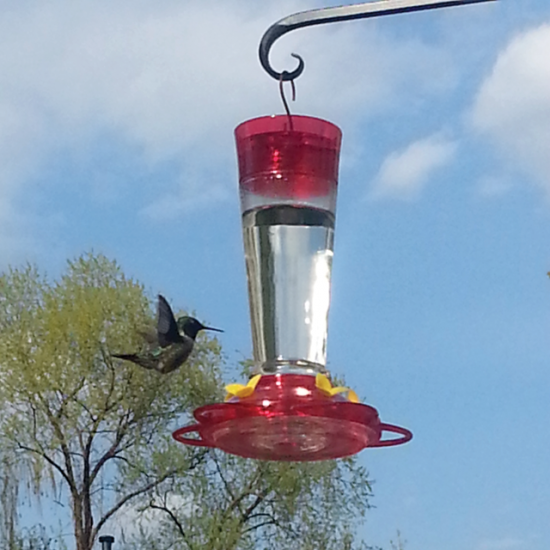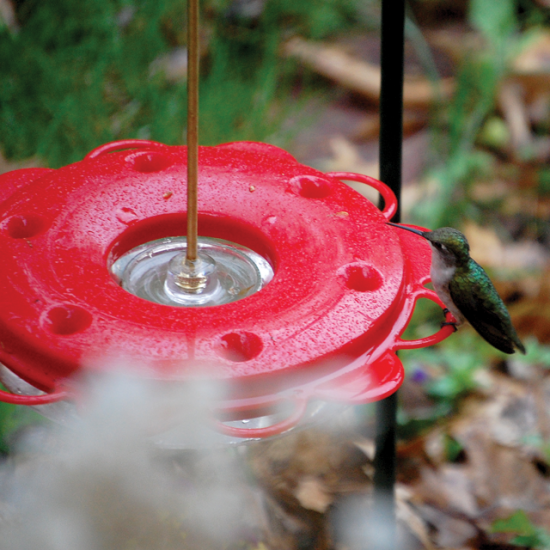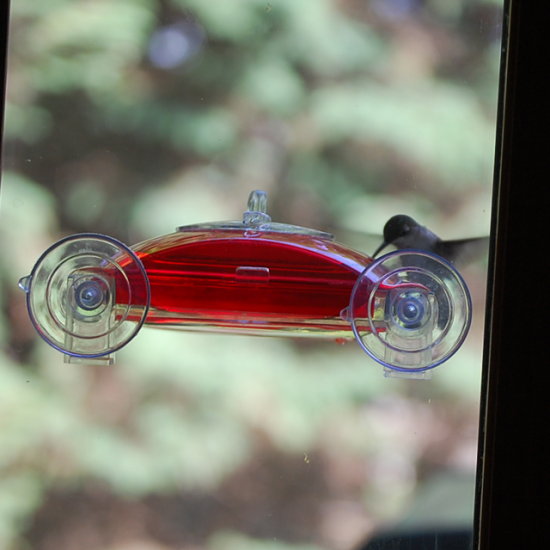Backyard birds
Attracting Hummingbirds
In Minnesota and the rest of the Eastern United States we have one native hummingbird species, the Ruby-throated Hummingbird.
These tiny birds are only 3″ to 3-3/4″ from beak to tail and have a wingspan of 4″ to 4-1/2.” What truly makes these birds remarkable is how they are able to fly and hover. With up to 53 wing beats per second, they are extremely agile flyers. In fact, hummingbirds are the only bird species that can actually fly backward.
The northward migration of Ruby-throated Hummingbirds in spring coincides with the flowering of key plants along their route. Recent studies have also shown that hummers follow the migration of the Yellow-bellied Sapsucker. The sapsuckers drill holes in the trees and the hummers lick the sap and insects that get trapped in it.
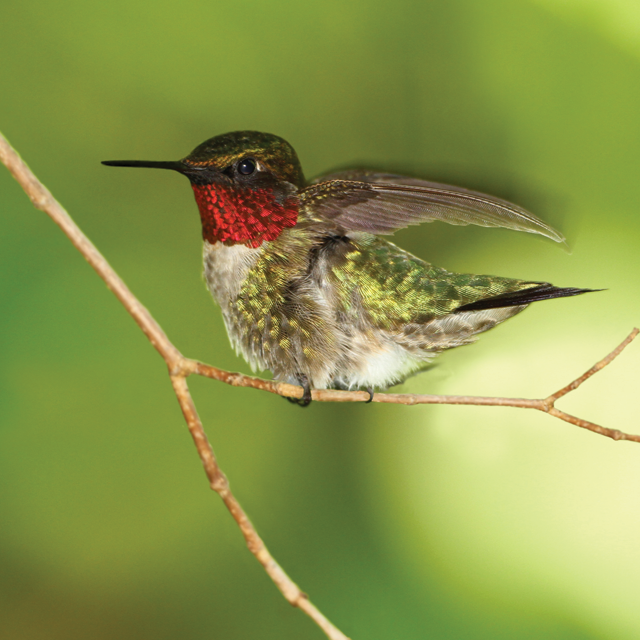
Hummingbirds typically arrive in the Twin Cities during the last week of April or first week of May. Their southward migration begins at the end of August and it is not unusual to see birds from farther north moving through as late as mid-October. Some hummingbirds migrate all the way across the Gulf of Mexico and winter as far south as Panama. The majority however, migrate around the Gulf through Texas and northern Mexico to spend the winter in Central America.
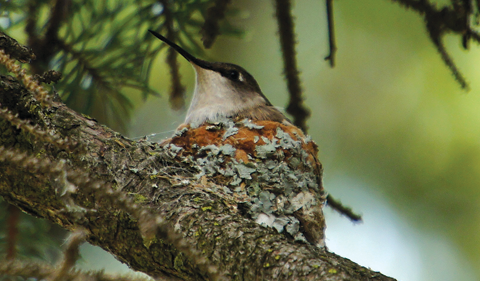
In the spring, males return before the females and establish foraging territories. When the females arrive, they construct a tiny nest using leafy materials and silk from spider webs or caterpillar cocoons, then add a final adornment of lichens. After mating, the female lays two Tic Tac®-sized eggs, which she incubates by herself. She also feeds the hatchlings alone for the first three weeks, until they are ready to leave the nest.
Diet
We all know that hummingbirds consume nectar, but remember that they also eat many tiny insects (for protein), so maintaining a pesticide-free yard or garden is a great way to keep them in your yard. They’ll even pluck unsuspecting spiders from their webs! For bathing, hummingbirds prefer mist and can often be seen flying through the spray of a lawn sprinkler.
Selecting a Feeder
When choosing a hummingbird feeder, you should make sure that it is easy to clean and fill. Many feeders come with bee guards to help keep insects away from the nectar solution while still allowing the hummingbirds to feed. A natural way to deter insects from the nectar is to apply mint extract to the feeding ports.
Types of Feeders: Inverted, window, dish reservoir
Placing a Feeder
It’s important to hang your feeder near some perching sites, like shrubs or trees, and also near flowering plants. If placing the feeder in your garden, make sure there is open space for at least 2-3′ under your feeder. According to Cornell University’s Lab of Ornithology the feeder placement—not the color—is what attracts hummingbirds. We recommend a mixture of partial sun and shade locations with perches within 5-8′ of the feeder. Hummingbirds are very bold, so you don’t need to worry about putting the feeder too close to the house or window. In fact, window-mount feeders are available and can provide exciting close encounters with these tiny birds. Hummingbirds are very territorial and defensive of their food supply and a dominant male may protect a single feeder by dive bombing other hummers that try to feed there. To avoid territorial wars, put up more than one feeder, placing them at least 10′ apart. If the feeders are too close, one hummingbird may take over both of them.
Filling the Feeder
There are many choices of nectar to use in your feeder. You can use prepackaged powder or a liquid concentrate, which you simply mix with water according to the instructions. You can also make your own:
Feeder Maintenance
Feeders should be emptied and cleaned every two to three days, or sooner if the nectar looks cloudy. Scrub the feeder with hot water or use a vinegar and water solution.
If ants become a problem, hang an ant moat above you feeder. Some hummingbird feeders come with built-in ant moats. Filled with water, this provides a barrier that ants can’t cross to get to the nectar ports.
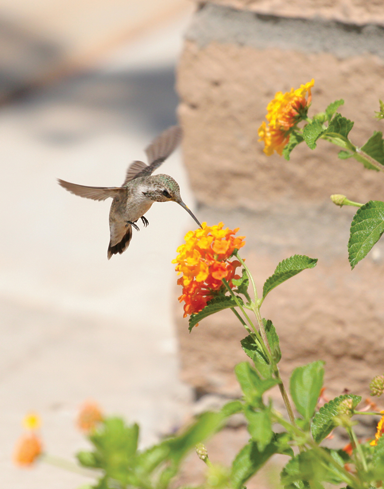
Flowering Plants
Providing a good hummingbird habitat goes a long way in attracting and keeping them in your yard. We’re fortunate that many of our native plants are preferred by the Ruby-throated Hummingbird. Here are some plants to consider offering.
ANNUALS
Fuchsia
Morning Glory
Nasturtium
Nicotiana
Impatiens
Petunia
Salvia
Zinnias
PERENNIALS
American Columbine
Bee Balm
Blazing Star
Butterfly Bush
Cardinal Flower
Clematis
Day Lillies
Garden Phlox
Gladiolas
Hollyhocks
Honeysuckle
Purple Coneflower
Rose of Sharon


